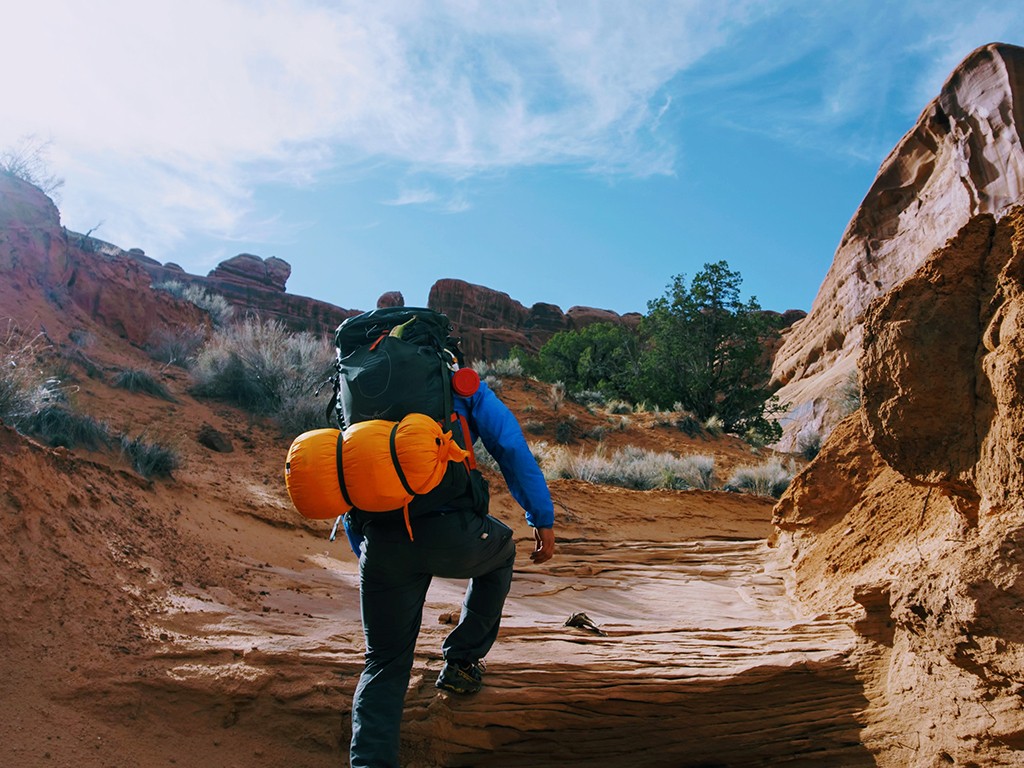
Backpacking 101: A Beginner’s Guide to Backpacking and Wilderness Survival
Backpacking is an exciting outdoor adventure that involves carrying all your essentials in a backpack and hiking through the wilderness. It allows you to disconnect from the modern world, explore nature, and challenge yourself physically and mentally. However, backpacking can also be intimidating for beginners, as it requires knowledge and skills in areas such as camping, navigation, and survival. In this article, we will provide you with a beginner’s guide to backpacking and wilderness survival, covering everything you need to know before embarking on your first backpacking trip.
1. What is Backpacking?
Backpacking, also known as trekking, involves carrying all your camping gear and supplies on your back and hiking through the wilderness for an extended period. It is a form of outdoor recreation that allows you to explore nature, challenge yourself physically and mentally, and experience a sense of freedom and adventure. Backpacking can range from a simple overnight trip to a multi-day expedition, depending on your level of experience and comfort.
2. Benefits of Backpacking
Backpacking offers a wide range of benefits, including physical and mental health, personal growth, and environmental stewardship. Here are some of the main benefits of backpacking:
- Physical exercise: Backpacking involves hiking, which is a great form of cardiovascular exercise and strengthens your muscles and bones.
- Mental health: Backpacking reduces stress, anxiety, and depression, improves mood and self-esteem, and enhances cognitive function and creativity.
- Personal growth: Backpacking challenges you to step out of your comfort zone, face your fears, and develop resilience, confidence, and self-reliance.
- Environmental stewardship: Backpacking promotes a deeper connection with nature, fosters respect and appreciation for the environment, and encourages responsible outdoor behavior.
3. Planning Your Backpacking Trip
Planning is crucial to a successful backpacking trip, especially for beginners. Here are the essential steps you need to take to plan your backpacking trip:
Choosing Your Destination
Choose a destination that suits your level of experience, interests, and preferences. Consider factors such as distance, elevation, terrain, climate, wildlife, and accessibility. Research online, read guidebooks, and ask experienced backpackers for recommendations.
Determining Your Route
Once you have chosen your destination, determine your route by studying maps, guidebooks, and online resources. Consider factors such as distance, elevation gain, water sources, campsites, and potential hazards. Plan your daily mileage and rest stops, and allow extra time for unforeseen circumstances.
Getting the Necessary Permits
Some backpacking destinations require permits for camping, hiking, or fishing. Research the permit requirements and application procedures, and apply well in advance, as some permits have limited availability and high demand.
Setting a Budget
Backpacking can be affordable, but it still requires some expenses, such as gear, transportation, permits, and food. Set a realistic budget that includes all these expenses, and be prepared to make adjustments if necessary. Consider renting or borrowing gear if you’re on a tight budget.
Packing Your Backpack
Packing your backpack is a crucial step that requires careful consideration of the weight, size, and functionality of each item. Follow the principle of “less is more” and pack only the essentials. Divide your gear into categories, such as shelter, clothing, food, and emergency, and distribute them evenly in your backpack to maintain balance and stability.
4. Essential Gear for Backpacking
Having the right gear is essential to a comfortable and safe backpacking trip. Here are the essential items you need for backpacking:
Backpacks
Choose a backpack that fits your body size and shape, and has adjustable straps, padded hip belt, and a frame for support. Consider the capacity of the backpack, which ranges from 30 to 80 liters, depending on the length of your trip and the amount of gear you need.
Tents
Choose a tent that suits your needs, such as weight, size, and weather resistance. Consider factors such as the number of people, the season, and the terrain. Look for features such as waterproof fabric, vestibules, and ventilation.
Sleeping Bags
Choose a sleeping bag that suits the temperature rating of your destination and your body type. Consider features such as insulation type, shape, and weight. Look for a sleeping bag that fits your body snugly and has a hood and a draft collar to retain heat.
Sleeping Pads
Choose a sleeping pad that provides insulation and cushioning between your body and the ground. Consider factors such as weight, size, and insulation type. Look for features such as self-inflating, air-filled, and foam-filled.
Clothing and Footwear
Choose clothing and footwear that are suitable for the weather, terrain, and activities of your trip. Layer your clothing for versatility, and choose fabrics that are breathable, moisture-wicking, and quick-drying. Choose footwear that provides traction, support, and protection.
Food and Water
Choose food and water that are lightweight, nutritious, and easy to prepare. Pack enough water for your daily needs, and bring a water filtration system or purification tablets for emergencies.
Navigation Tools
Choose navigation tools that are reliable and easy to use, such as a map, compass, GPS, or a combination of these. Learn how to use them before your trip, and bring spare batteries or backup tools.
First Aid Kit
Choose a first aid kit that includes essential items such as bandages, gauze, antiseptic, pain relievers, and tweezers. Customize your first aid kit according to your medical needs and the activities of your trip.
Other Gear
Other gear that you might need includes a stove, a cookset, a headlamp, a knife, a multitool, a bear canister, and a camera.
5. Basic Wilderness Survival Skills
Backpacking involves being self-sufficient and prepared for emergencies. Here are some basic wilderness survival skills that you need to know:
Building a Shelter
Learn how to build a shelter using natural materials such as branches, leaves, and rocks. Choose a site that is sheltered from the wind and the rain, and avoid areas that are prone to flooding or falling debris.
Starting a Fire
Learn how to start a fire using a lighter, matches, or a firestarter. Choose a site that is safe and legal for fires, and follow the local regulations and restrictions. Collect dry tinder and kindling, such as small twigs and dry leaves, and gradually add larger fuel, such as branches and logs.
Finding and Purifying Water
Learn how to find and purify water in the wilderness. Look for sources such as streams, lakes, and springs, and filter or boil the water to remove impurities and pathogens. Bring enough water or a reliable water filtration system or purification tablets.
Navigating Without a GPS
Learn how to navigate without a GPS using a map and compass or natural signs, such as the sun, the stars, and the wind. Practice beforehand and familiarize yourself with the terrain and the landmarks.
Identifying and Avoiding Hazards
Learn how to identify and avoid hazards such as wildlife, weather, and terrain. Research the risks and precautions of your destination, and take appropriate measures such as carrying bear spray or avoiding steep slopes.
Signal for Help
Learn how to signal for help in case of an emergency, using techniques such as shouting, whistle blowing, signaling with mirrors or flares, or building a visible sign.
6. Leave No Trace Principles
Leave No Trace Principles are a set of guidelines that aim to minimize the impact of human activity on the natural environment, especially in the wilderness. These principles include seven core practices: plan ahead and prepare, travel and camp on durable surfaces, dispose of waste properly, leave what you find, minimize campfire impact, respect wildlife, and be considerate of other visitors. By following these principles, backpackers can preserve the beauty and integrity of the wilderness while still enjoying it. It’s important to remember that even small actions, such as picking up litter or avoiding trampling vegetation, can make a significant difference in protecting the environment for future generations.
Conclusion
Backpacking can be a thrilling and rewarding experience for beginners, as long as you are prepared and informed. By following these tips and guidelines, you can have a safe and enjoyable trip while immersing yourself in the beauty and serenity of the wilderness.
Frequently Asked Questions (FAQs)
Do I need to be in excellent physical condition to go backpacking?
Can I backpack alone?
Do I need to have prior experience in camping or hiking to go backpacking?
How do I know if I'm adequately prepared for backpacking?
Can I backpack in any season?





